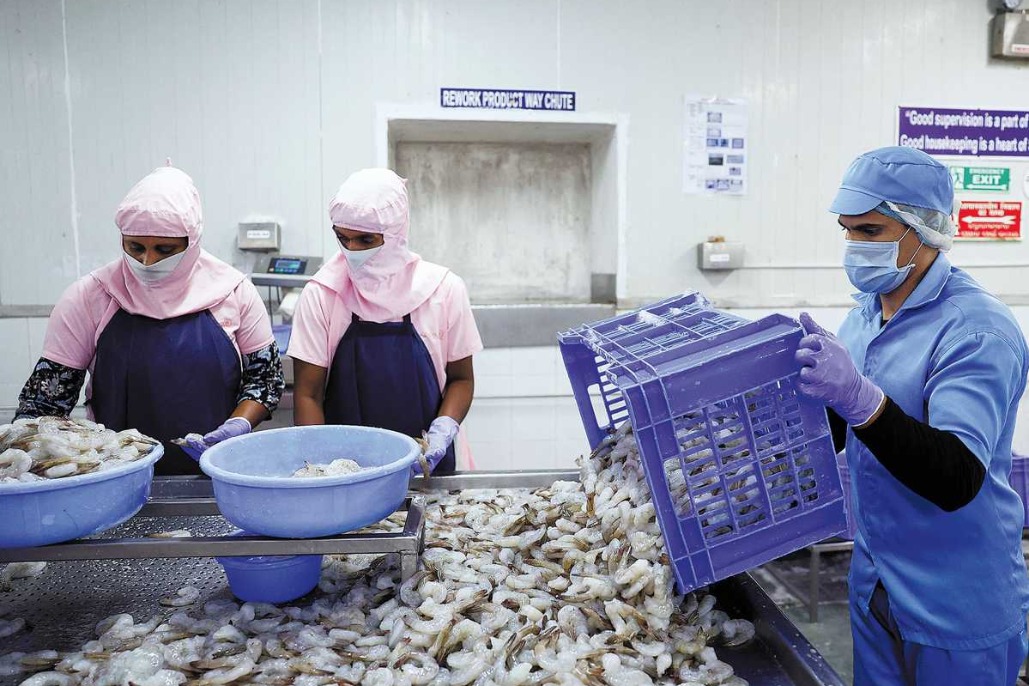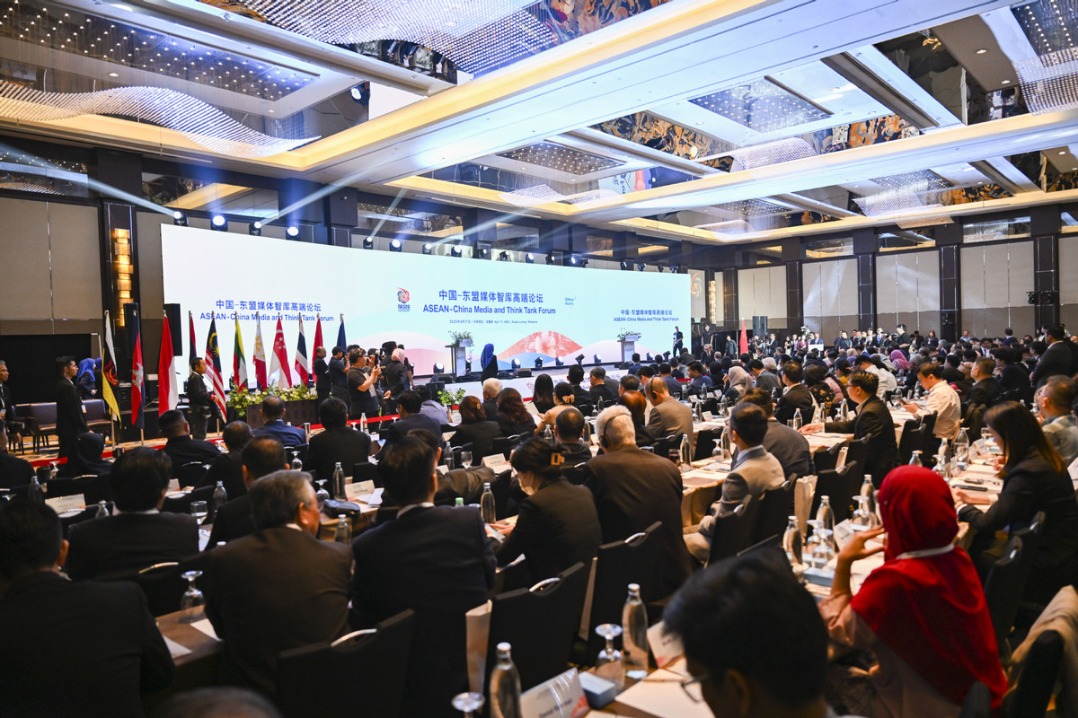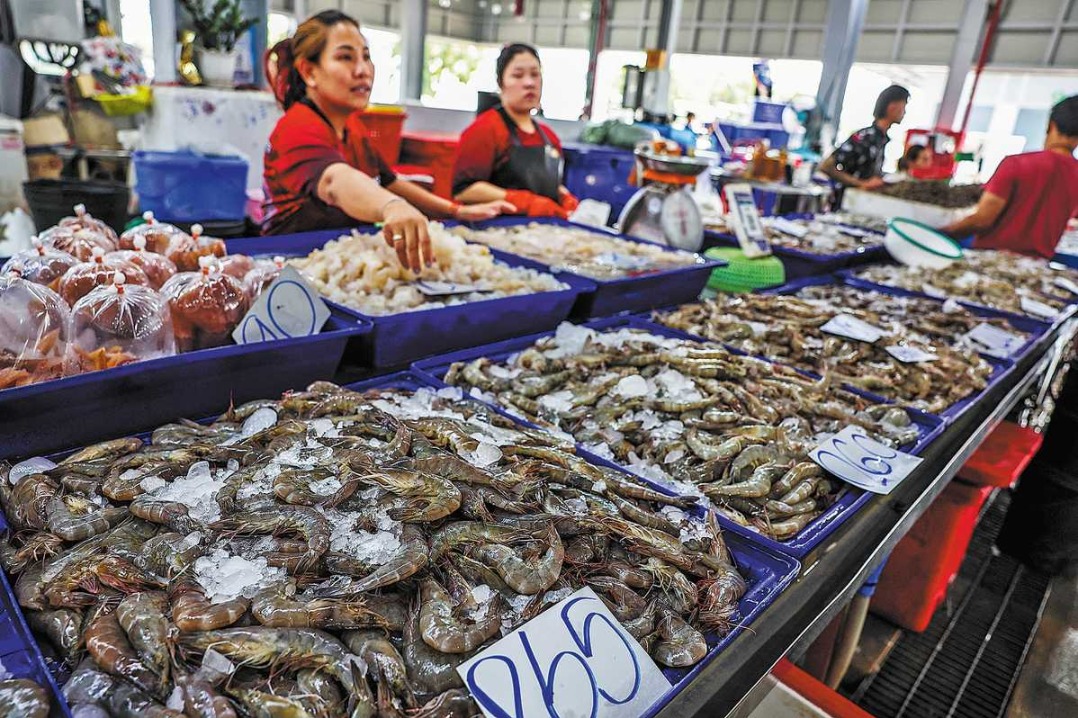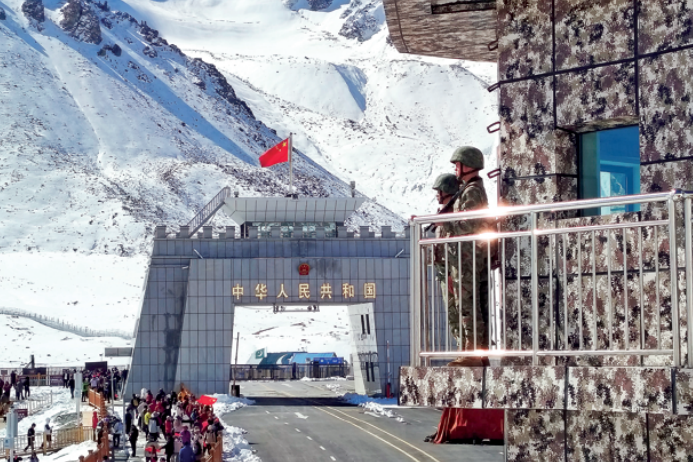Indian shrimp businesses sailing in troubled waters


GANAPAVARAM, India — Turbulence unleashed by US tariffs could rock global shipments of shrimp to the United States, with exporters in biggest supplier India saying they endanger 2,000 containers packed with the frozen delicacy.
India's shrimp industry is staring at an additional tariff of 26 percent, which threatens a thriving $7 billion seafood export market heavily reliant on US supermarket chains as buyers look to renegotiate rates.
Farmers are seeing demand dry up amid the uncertainty as exporters have cut offer prices by one-tenth since the tariffs.
"We are suffering huge losses," said S.V.L. Pathi Raju, 63, standing by the aquaculture pond where he feeds and grows shrimp in India's southern coastal state of Andhra Pradesh.
"We don't know who can resolve our price issues," said Raju, one of several families in the state's remote village of Ganapavaram grappling with dwindling sales to exporters.
Many also face high payments for shrimp feed and rentals for the land where the saline ponds have been set up.
"I am not sure how I will sustain prices," said another farmer, 60-year-old Uppalapati Nagaraju, adding that he had been entirely unaware of the concept of tariffs.
"Had I known, I would not have started my cultivation."
In the face of erratic demand from exporters, he now regrets having begun shrimp cultivation just 15 days before the tariff news. Although the US has delayed the 26 percent rate until July, even the current rate of 10 percent has made exporters skittish.
The United States and China are among India's major markets for seafood exports that touched $7.3 billion last year, on a volume of 1.8 million metric tons that was an all-time high.
Shrimp formed the major component, with the 300,000 farmers of Andhra Pradesh contributing the most to industry supplies, accounting for 92 percent of India's seafood exports of $2.5 billion last year to its biggest market, the US.
Industry representatives have joined a state government panel weighing the effects of tariffs and looking for ways to boost exports to other countries, such as China.
G. Pawan Kumar, president of the Seafood Exporters Association of India, said he was worried about shipping containers already packed with frozen produce at previously agreed rates now set to be renegotiated by US buyers following the tariffs.
"Ten percent is high, we exporters operate on a 3 percent to 4 percent margin," he said.
Agencies via Xinhua

































